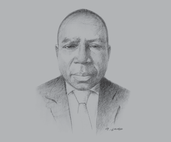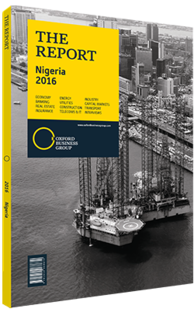Iyiola Adegboye, Former Acting Managing Director, Lagos Metropolitan Area Transport Authority (LAMATA): Interview

Interview: Iyiola Adegboye
How would you assess the impact of the bus rapid transit (BRT) system?
IYIOLA ADEGBOYE: We view the BRT system as a resounding success. There are a number of different ways to measure the achievements: the quality of bus service for passengers, the speed of bus service, the degree to which commuters have a contact point to submit complaints, and so on. In an earlier version of the BRT, we had individual operators running individual buses, which led to a lack of accountability from the operators. With the new model, commuters are getting to their destinations more quickly and service is more consistent. It will not change depending on the day of the week or weather patterns; reliability is a key indicator when measuring the system’s success. That said, there are still areas where we can do better. For example, some bus operators must improve the manner in which they interact with the travelling public.
In terms of plans for the future, we are determined to expand the BRT network across Lagos, since we have only covered a minor portion of the city. LAMATA is also excited to introduce an electronic ticketing system in the near future, to which both operators and commuters will need to adjust. We are currently in a transition phase regarding this system. There is a significant amount of equipment – both hand-held and machinery to be installed on the buses – that needs to be set up.
For the BRT, we have the Strategic Transport Master Plan for Lagos that identifies up to 14 routes throughout the city, of which we are only operating one. Finance is a significant constraint to getting these additional routes operational.
Where does progress on the Lagos Rail Mass Transit system currently stand?
ADEGBOYE: LAMATA has a master plan that identifies seven rail corridors in Lagos, in addition to a monorail system around the central business district and Victoria Island. Railways are quite expensive and tracks cannot be laid overnight, so the system will take time to properly set up. We have identified three particular corridors which we regard as the spine of the entire network. When these are functional, there will be a noticeable impact on general transport fluidity throughout the city. These three lines are the Blue Line, which is currently under construction, the Red Line, which is at an advanced stage of planning, and the Green Line, which runs in the direction of the Lekki Peninsula.
In terms of a timeline, our belief is that by 2030 everything will be in place and running. The biggest impediment to this materialising is access to finance. Private capital is expected to play an important role in funding these projects, and we believe public-private partnerships will drive the progress of these transport systems.
What opportunities do you see for investors in building out the various modes of transport?
ADEGBOYE: Demand for transport in Lagos is already enormous and will only increase as the city’s population continues to grow. Congestion in the country’s largest city is well documented. With such a great need for more and better transport networks, there are undoubtedly profits to be made for private entities interested in the sector.
Completing large-scale transport projects in Nigeria is not easy, however, and requires a competent, savvy investor to successfully operate in the country. An important consideration is that transport projects are often long-term ventures, usually taking around 20-25 years to complete. Lower oil prices have had a clear impact on Nigeria’s foreign exchange regime and short-term economic trajectory, but demand for better transport services should remain constant for decades to come.
You have reached the limit of premium articles you can view for free.
Choose from the options below to purchase print or digital editions of our Reports. You can also purchase a website subscription giving you unlimited access to all of our Reports online for 12 months.
If you have already purchased this Report or have a website subscription, please login to continue.

